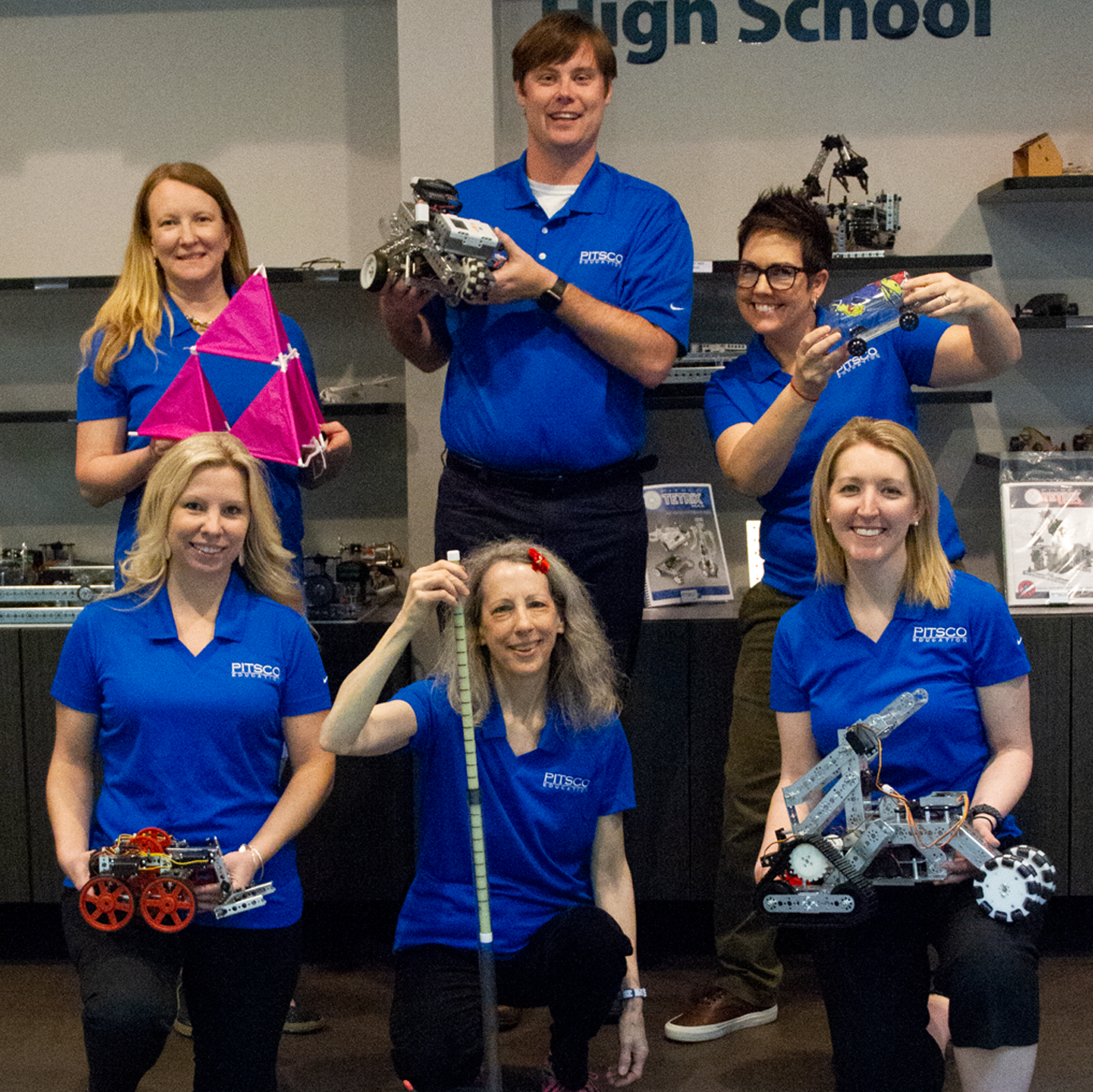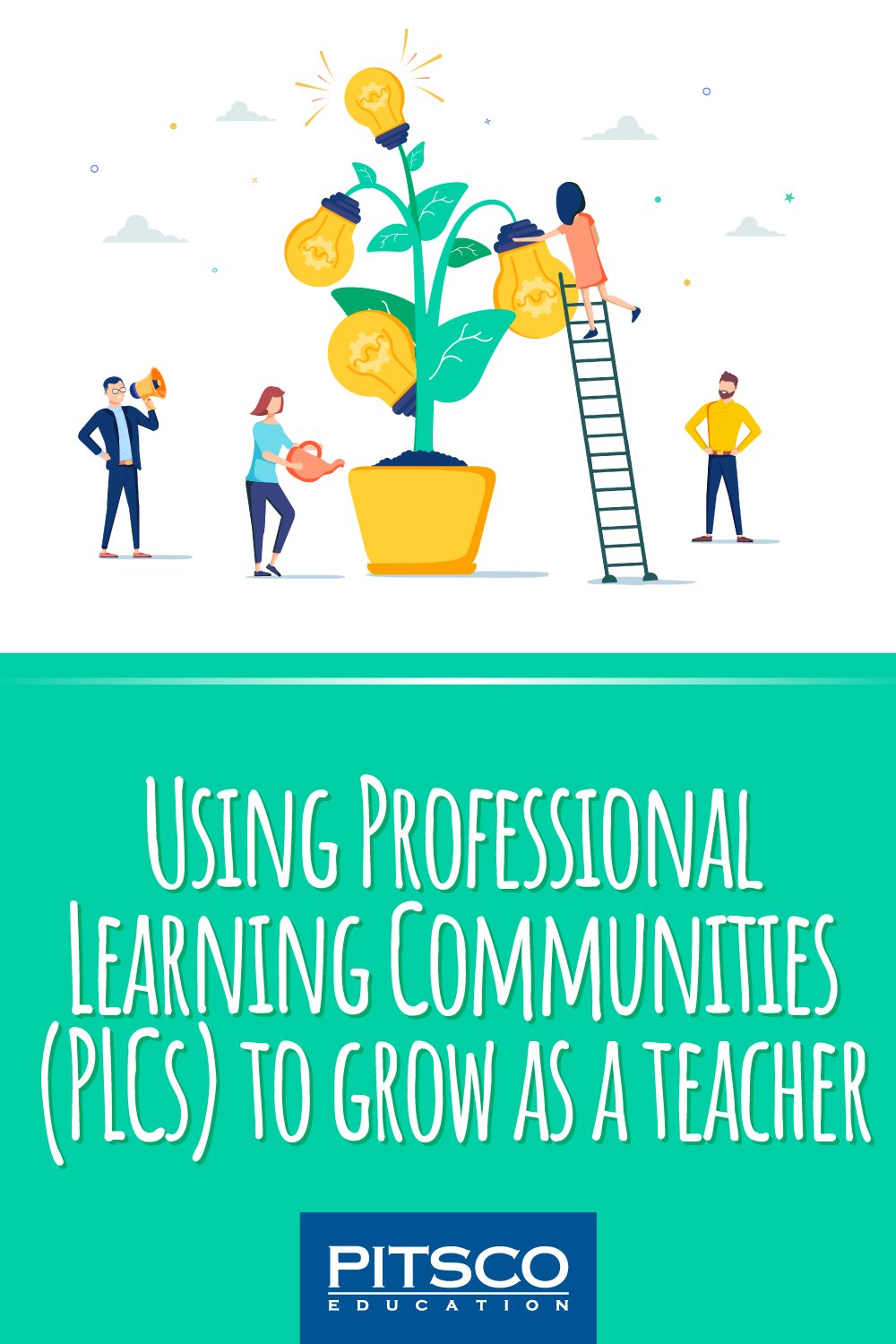(Authored by Jim Brown and James Jones, members of The Ambassador Group for Pitsco Education.)
Updated 6/18/24
Teachers of all grade levels face challenges on a daily basis, from elementary teachers tasked with teaching young students to read and recognize shapes and sounds to middle school teachers working with students who are beginning to gain more independence and figuring out their place in the world to high school teachers trying to prepare burgeoning adults for the real world.
In order to help students grow intellectually and emotionally, and to continue meeting their thirst for knowledge, we ourselves must stay thirsty – for knowledge, understanding, and new ways of teaching and reaching our students.
 Learning Communities: Ready-made Opportunities for Growth
Learning Communities: Ready-made Opportunities for Growth
Finding time for continuous learning opportunities can be daunting. A good way to keep learning opportunities within reach all year long is through building and maintaining professional learning communities (PLCs). Most of the time when teachers hear PLC, their eyes begin glazing over. However, joining a PLC that focuses on your personal teaching needs can help you reach your goals, which ultimately benefits you and your students. You easily get out of it what you put into it; new ideas, new concepts, and new hands-on activities will increase your effectiveness as a teacher as you collaborate and join the conversation.
PLCs can include:
- Daily interactions with colleagues
- Workshops and conferences
- Summer PD experiences
- Organized groups that meet regularly for specific purposes
Often, simply being around your colleagues allows for numerous spontaneous interactions and opportunities for learning. You might overhear a conversation that makes you wonder, ask questions, and learn things you would not have if you were in a room by yourself. Being in the midst of other educators also enables you to ask questions that can lead to comments such as, “This is how I’ve done it.” or “Have you thought about trying this?”
Consider securing a desk in a room with other educators from different subject areas. Spend your planning period just sitting in your colleagues’ classrooms and see how they disseminate information and solicit feedback. But, you don’t have to forgo your private classroom time or planning periods to encounter such occasions. Informal moments such as having lunch with your fellow teachers or working on school projects together provide ample opportunities to learn from each other.
Other types of PLCs include workshops, conferences, and summer professional development experiences. Besides the obvious learning that takes place during seminars, classes, and demonstrations, there are numerous learning opportunities that arise from casual interactions. During breaks or while perusing the booths, you ’ll inevitably run into others with similar interests. All you need to do is trade contact information and let nature take its course. It’s a wonderful way to meet new people and obtain fresh ideas for your classroom.
 Formal Learning Communities
Formal Learning Communities
Beyond informal learning communities, it’s helpful to seek out PLCs focused on growth in pedagogy and content. Some of these are available through specific organizations such as the New York State Master Teacher Program, a group of 900+ STEM educators throughout New York State. Subgroups in this organization meet regularly to discuss specific topics, and these educators from all over New York get to tune in to what is going on in other schools or districts and how they’ve dealt with similar issues. By sharing what’s worked for them, teachers allow their colleagues to continue their own learning process.
The Ambassador Group (TAG) at Pitsco is another example of a formal PLC. Through this group, members learn from a select group of educators from across the US – what they’re doing in their classrooms, their perspectives on a variety of subjects, and so forth. TAG members also learn from Pitsco about hands-on STEM products and programs that bring success to students in classrooms around the world.
 Working with education company PLCs such as Pitsco’s TAG enables teachers to help shape ideas and products that could affect millions. Likewise, volunteering for state or district PLCs gives educators opportunities to change curriculum for the better. Helping your district retool curriculum and activities can reignite your spark for learning and teaching.
Working with education company PLCs such as Pitsco’s TAG enables teachers to help shape ideas and products that could affect millions. Likewise, volunteering for state or district PLCs gives educators opportunities to change curriculum for the better. Helping your district retool curriculum and activities can reignite your spark for learning and teaching.
Fostering Your Own Intentional, Continuous Learning
Teachers are used to change: the yearly introduction to new students, a new curriculum, or teaching during a pandemic! For some, change comes easier than it does for others. Whether you’re transitioning to something new or refining something familiar, having a network of like-minded educators to turn to can make change less intimidating. For example, if you can’t seem to connect with a new student, you might speak to their previous teacher to gather insight about what works for that student. However, what if the previous teacher is not at your school? What if what worked for them doesn’t work for you? What if, as has been the case for so many of us recently, there’ve been so many major changes that what worked before no longer applies? In these cases, how do you acquire new knowledge and/or skills to help you succeed? Cultivating informal and formal professional networks can improve outcomes for you and your students both in good times and in times of upheaval.
The thought of cultivating several different PLCs might sound overwhelming, but it doesn’t have to be another huge chore added to your growing list. You can start simple and let things develop organically. In your day-to-day teaching, when you start to wonder how you could do better or what lesson you could do for a specific topic, start by reaching out to those closest to you. Then, increase your queries as your comfort level increases and your time allows. The more you reach out and try to expand your knowledge, the more you will find people willing to help you directly or connect you with others who can help. Your learning communities will grow naturally, and you will soon find yourself wanting to find more opportunities for even deeper growth.

MORE ABOUT THE AUTHORS:
Jim Brown is a Grade 5 and 6 STEM teacher at Sand Creek Middle School in Albany, NY, with 28+ years of teaching experience at the elementary and middle school level. He’s coached numerous students in STEM competitions including FIRST® LEGO® League and KidWind. He helped create the STEM program for South Colonie Central School District, which impacts every student in the district. For Jim, the best part of teaching is sparking curiosity in students and empowering them through education. He’s passionate about energy and problem-based learning and, as a certified energy manager, often conducts energy audits of educational facilities for the National Energy Education Development Project. Jim’s a member of the New York State Master Teacher Program, participating in both their Growth Mindset PLT and their Middle Level PLT groups. He’s also a member of Pitsco Education’s TAG (The Ambassador Group).
James Jones has taught science and engineering for 24+ years and working with and teaching robotics for at least 22 of those. He currently teaches at Wedgefield School in Orlando, FL. James has been a LEGO Education trainer for the past 20+ years and was a charter member of the LEGO Education Advisory Panel (LEAP). He was instrumental in the writing of the Florida state standards for high school robotics and helped start the Summer Robotics Institute at Mid Florida Technical College. In addition to his past experience as a LEAP member, James also participates in his district’s Technology Education and Business Education (CTE) professional learning communities, is a Pitsco TAG member, and collaborated with another Florida district and state CTE director to create the Applied Robotics curriculum currently offered to all Florida high school students.


